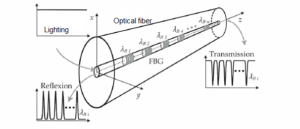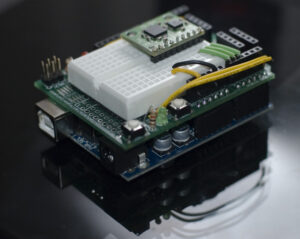 A new compact sensing system based on fiber Bragg grating technology has been designed to control urban traffic density up to 80 kph. The sensing technology includes a 2.5-m-long and a 2-cm-high fiber optic sensor made from a combination of silicone addition rubber and fiber Bragg grating put inside a carbon tube.
A new compact sensing system based on fiber Bragg grating technology has been designed to control urban traffic density up to 80 kph. The sensing technology includes a 2.5-m-long and a 2-cm-high fiber optic sensor made from a combination of silicone addition rubber and fiber Bragg grating put inside a carbon tube.
The design of the compact FBG sensors allows monitoring and detecting the traffic density and car crossing in a single lane. It should be noted that such a sensing system has been already tested in real traffic and demonstrated quite a high detection rate of 98.946% based on the control of 1518 vehicles of various types and sizes.
To be more precise, traffic sensing systems are considered to be special devices that determine input data and information for other transport infrastructure systems. It is possible to install traffic sensors next to, above, into, or onto a road’s surface. The fiber optic sensors control “the presence of a vehicle, vehicle speed, vehicle classification, wheelbase and number of axles, total vehicle weight, road axle load, and occupancy, all of which indicate the traffic flow quality”.
The thing is that sensing systems based on optical fibers provide the following benefits: robustness, precision, high sensitivity, electromagnetic and chemical resistance, electrical passivity, and a broad temperature operating range. Additionally, it is possible to use fiber optic sensors in hybrid systems. The operating principle of fiber sensors is based on transmitting and receiving a laser or infrared beam from an emitter to a receiver.
Another type of fiber optic sensor is distinguished which is a micro-motion one. Such a fiber sensor operates using the increasing of optical fiber attenuation. Herewith, these optical fibers have special protective coatings and they are installed into a roadway. Nevertheless, their application is experimental, and these fiber sensors are not employed in general practice.
Also, the DAS technology (Distributed Acoustic Sensor) can be used for the same purposes. For instance, DAS systems apply a single optical fiber to control multiple traffic parameters, such as detecting a car, its direction, its speed, etc. However, FBG sensors require proper protection in order to avoid damage to the sensors. The use of composite fiber protection to the FBG sensors enables us to successfully solve the current problem.
The high sensitivity of portable FBG sensors and success rates in determination vehicles are regarded as a good supposition for expanding research and future developments for monitoring automotive traffic. Nowadays researchers plan to improve the design of fiber sensors to provide a more stable sensitivity, as well as to expand the determination capabilities of the sensing system, and to produce the sensor for year-round application.
Optromix is a manufacturer of innovative fiber optic products for the global market. The company provides the most technologically advanced fiber optic solutions for the clients. Optromix produces a wide range of fiber optic devices, including cutting-edge customized fiber optic Bragg grating product line and fiber Bragg grating sensor systems. Moreover, Optromix is a top choice among the manufacturers of fiber Bragg grating monitoring systems. If you have any questions, please contact us at info@optromix.com


 A team of researchers offers a new application of
A team of researchers offers a new application of A team of researchers from Australia has developed a mathematical model, which is based on energy deposition and the laser-induced damage threshold (LIDT) for low-intensity light radiation resulting in the appearance of conducting polymers in novel
A team of researchers from Australia has developed a mathematical model, which is based on energy deposition and the laser-induced damage threshold (LIDT) for low-intensity light radiation resulting in the appearance of conducting polymers in novel  The opportunity to measure body temperature plays a crucial role in both physiological studies and clinical investigations. New wearable sensors based on
The opportunity to measure body temperature plays a crucial role in both physiological studies and clinical investigations. New wearable sensors based on  Fiber Bragg gratings
Fiber Bragg gratings Nowadays the
Nowadays the  Fiber Bragg grating sensors
Fiber Bragg grating sensors Fiber optic inclinometer
Fiber optic inclinometer The
The  Fiber optic technology
Fiber optic technology